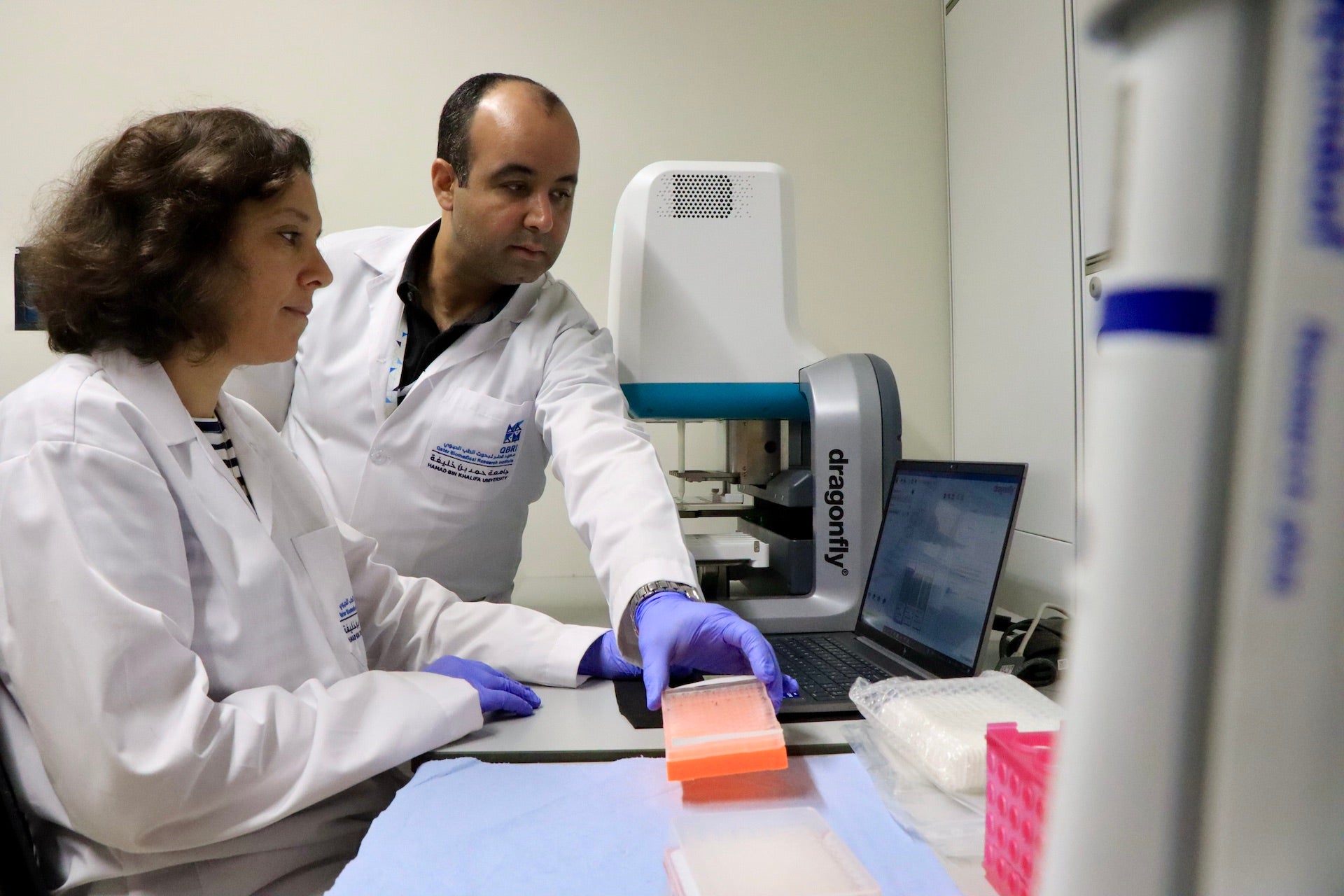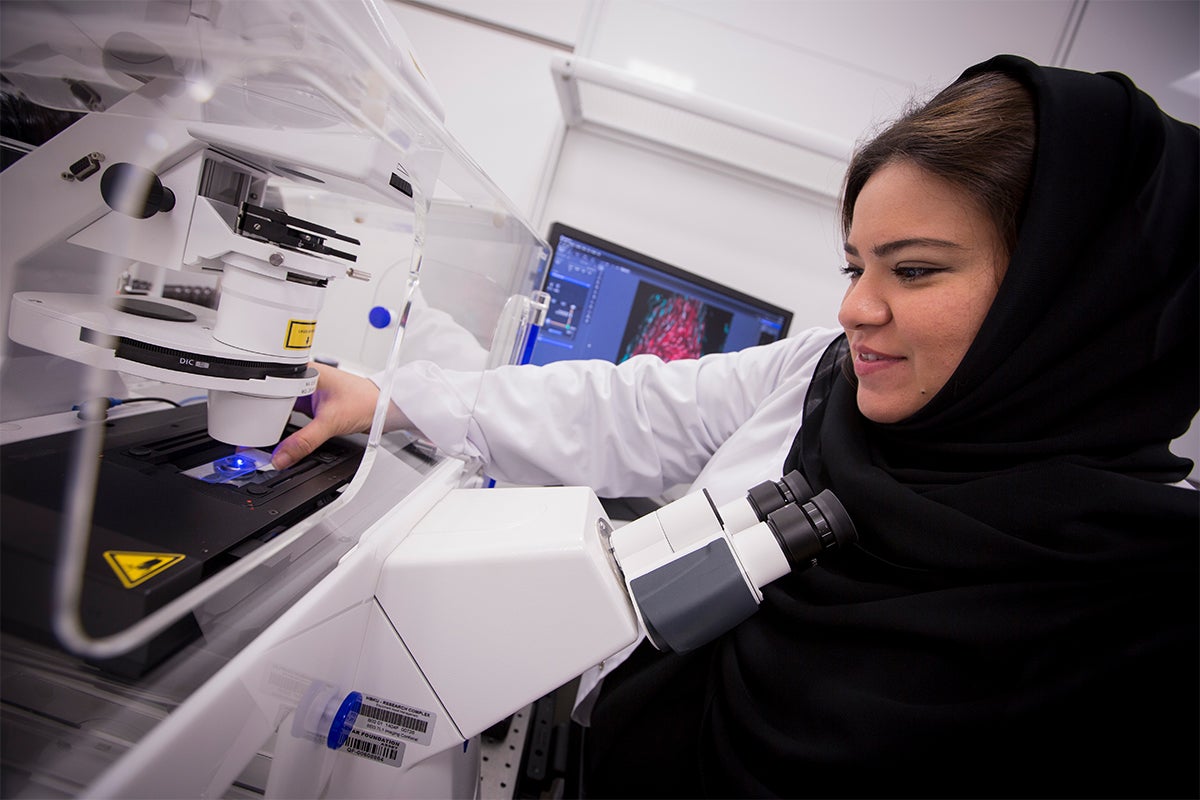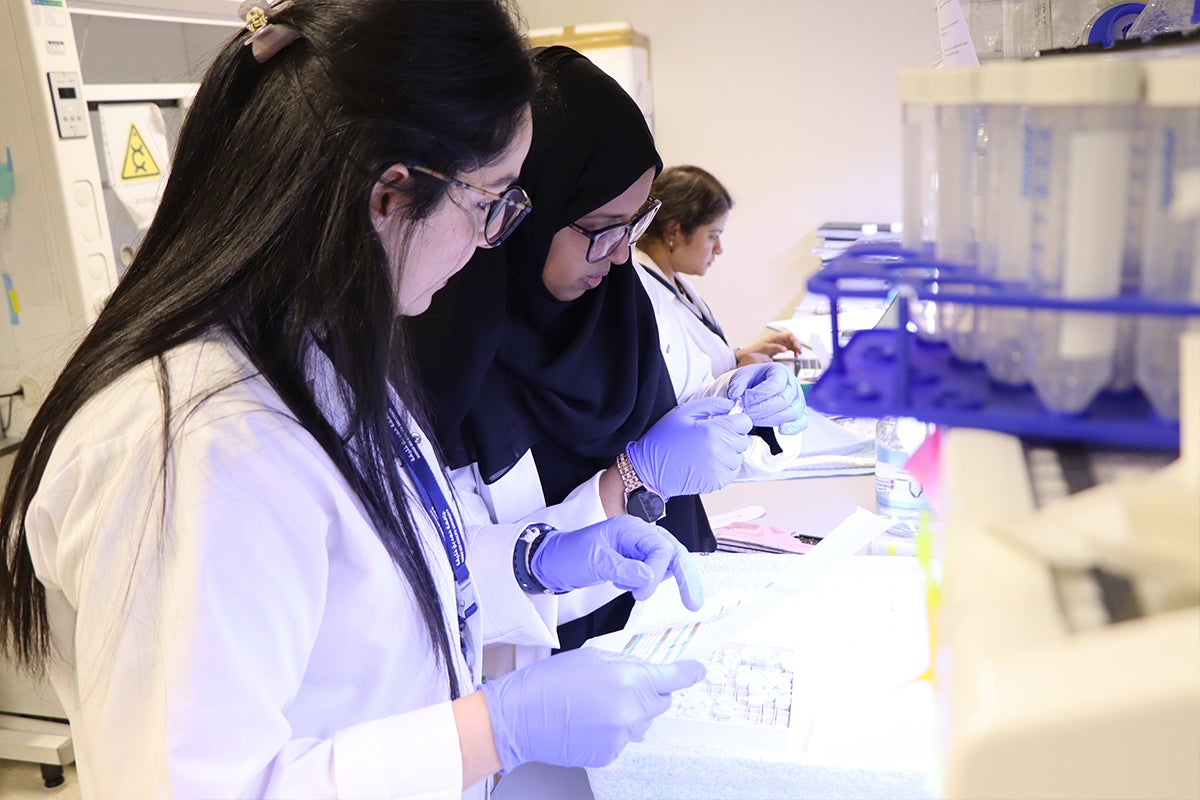By Dr. Simona Ghanem

Parkinson's disease (PD) is a progressive neurodegenerative disorder that affects millions of people worldwide. It is caused by the loss of dopaminergic neurons in the brain, leading to motor symptoms such as tremors, rigidity, and slowness of movement and speed (bradykinesia). A major challenge in PD is the development of accurate, specific, and reproducible tests that can reflect the progression of the disease and its response to therapy. Biomarkers, such as misfolded α-synuclein (αSyn) protein, are being investigated for their potential use in the diagnosis and management of the disease.
Researchers at the Neurological Disorders Research Center (NDRC) at Hamad Bin Khalifa University’s (HBKU) Qatar Biomedical Research Institute (QBRI) are focused on understanding neurological and neurodegenerative disorders. The laboratory of Dr. Omar El-Agnaf has been working on understanding PD disease progression, developing potential diagnostic and therapeutic tools, and biomarker discovery. Their research is well-known for developing novel antibodies and immunoassays targeting PD pathology and biomarker discovery.
One of the latest studies conducted by Dr. El-Agnaf's group concerns the development of a novel approach to investigate disease-associated αSyn aggregates as biomarkers of PD clinical stage. The study was recently published in the Neurology journal, highlighting the importance of finding biomarkers that can mirror PD. The assay developed in this study provides a promising diagnostic tool, providing information about the disease stage by correlating with clinical measures of disease severity.
Researchers used two different tests, the seed amplification assay (SAA) and enzyme-linked immunosorbent assay (ELISA), to measure αSyn aggregates in brain tissue and cerebrospinal fluid (CSF) from patients with PD or dementia with Lewy bodies. The latter are distributed more widely throughout the brain, affecting not only movement but also cognitive function and behavior. They found that combining the two tests provided more accurate and reliable results than using SAA alone. It was also determined that the levels of CSF-seeded αSyn oligomers (a type of αSyn aggregate) correlated with the severity of clinical symptoms in PD patients, as measured by the Unified Parkinson Disease Rating Scale (UPDRS) and Hoehn and Yahr scores. The novel approach of multiplexed SAA and ELISA platforms can derive meaningful quantitative information about the seed concentration in a CSF sample that could relay information about PD severity.
This study presents a promising biomarker for Parkinson's disease that may help in early detection and monitoring of the disease progression. The combination of SAA and ELISA assays provides a more comprehensive and quantitative approach to detecting misfolded αSyn in human samples, and the results obtained from this approach correlate well with clinical measures of disease severity.
Biomarkers such as this have the potential to improve diagnostic accuracy and may also be useful in the development of new therapies for PD. Early diagnosis and monitoring of the disease can lead to earlier intervention, better outcomes for patients, and more efficient use of healthcare resources.
The research conducted by Dr. El-Agnaf's group offers a promising avenue for biomarker discovery in PD. The use of SAA and ELISA assays together provides a more comprehensive and quantitative approach to detecting misfolded αSyn in human samples, which may have significant implications for the diagnosis and management of PD. Further research in this area may lead to the development of new therapies that can slow down or even halt the progression of the disease.
Related News

Extensive Collaborations and Unique Technical Capabilities Unveil Neurological Protein Signature of Severe COVID-19

Advancements in Type 1 Diabetes Treatment: FDA Approves CellTrans' Lantidra Cell Therapy








